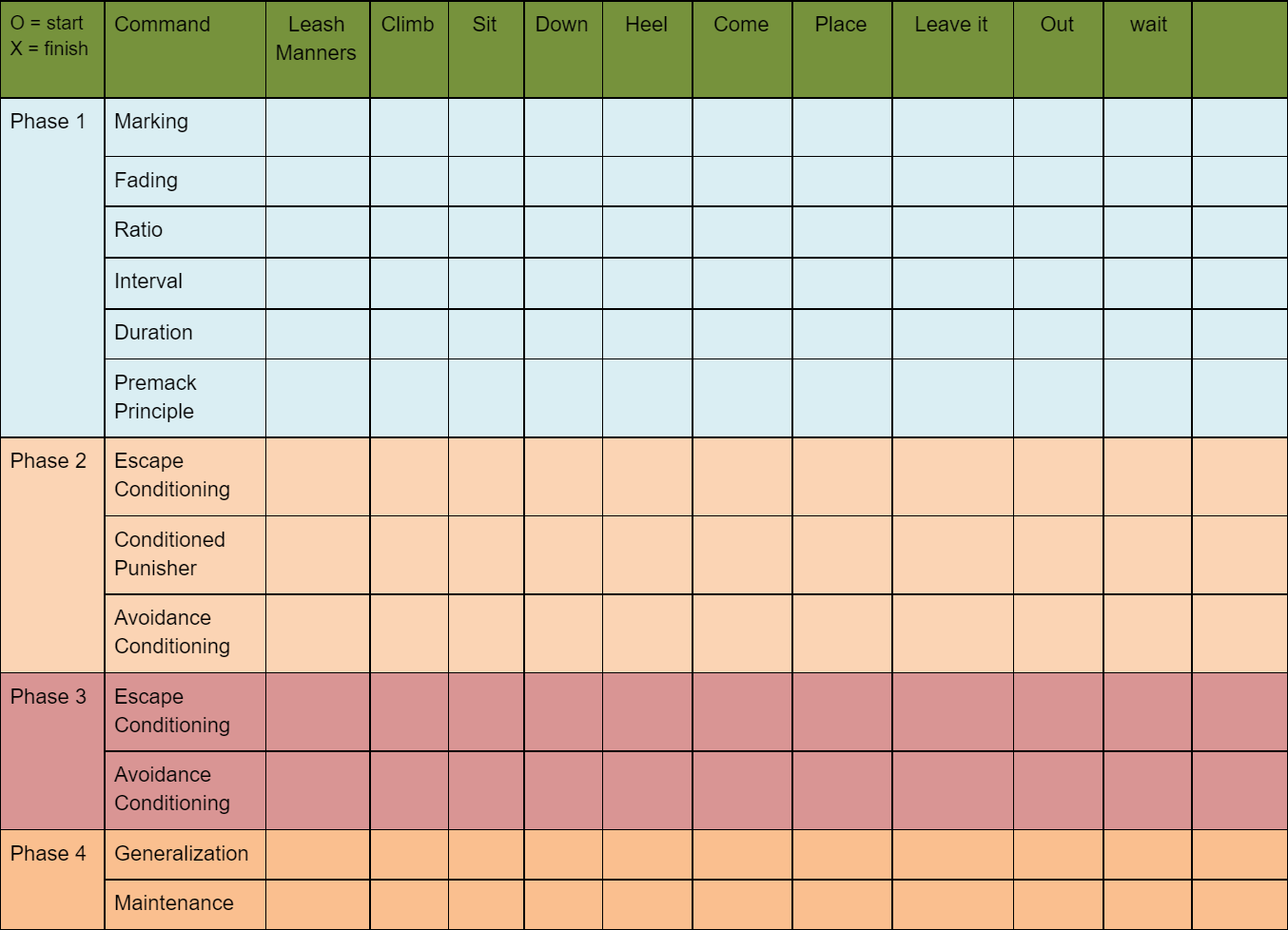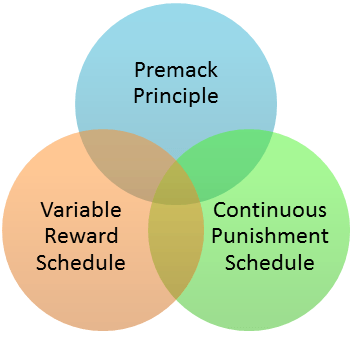Objectives
- What is a duration schedule?
- Why do we learn it after ratio and interval?
- How does it relate to our command structure?
- How can we apply it to make obedience easier
- How can it be used to teach the dog, that you have their best interest in mind during advanced training?
Duration - A measure of time where a behavior continually occurs
Do not confuse with Interval - The measure of time between when reinforcement (is available). This has nothing to do with whether a behavior needs to be consistent between the intervals.
Durations are easy to lengthen when the dog naturally maintains the behavior between intervals or you start off with super quick durations.
Either way it is useful in training to use Conjoint schedules of reinforcement.
Give one type of schedule during the behavior and another at the end of a duration for that behavior and then thin out as necessary for the task at hand and it is easy to succeed.
Why is it after Ratio and Interval?
How does this relate to the command structure?
Duration

Fixed Duration Schedule FD-8
| Behavior | 1 | 2 | 3 | |||||||||||||||||||||
| Time | 0 | 1 | 2 | 3 | 4 | 5 | 6 | 7 | 0 | 1 | 2 | 3 | 4 | 5 | 6 | 7 | 0 | 1 | 2 | 3 | 4 | 5 | 6 | 7 |
| Marker | M | M | M | M | M | M | M | M | M | |||||||||||||||
| Reward | R | R | R | R | R | R |
Progressive Duration Schedules
Variable Duration Schedules
Compound Duration Schedules (with reinforcement ratios)
and Conjoint Schedules - Two separate schedules are used to reinforce the same behavior.
For instance, one schedule use during the behavior on an interval and a separate after a duration using two separate rewards or an ACTIVITY (instead of a stimulus)
Premack Principal - A more desired activity is a reinforcer for doing a less desired activity.
The act of playing or doinbg other breed specific behavior is a reward for doing obedience.
Conjoint Schedule - Two separate schedules are used to reinforce the same behavior

Premack Pricipal






Responses